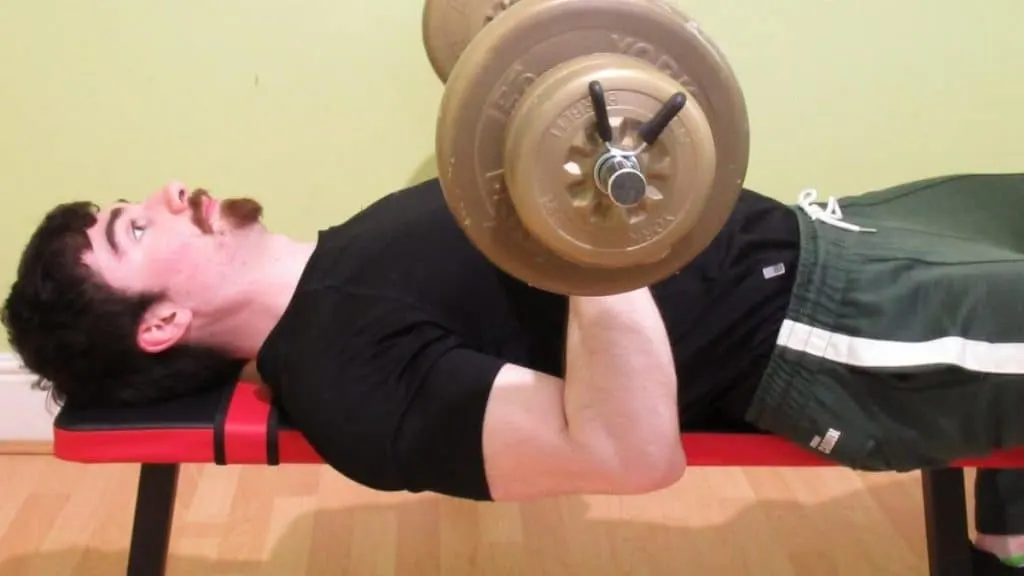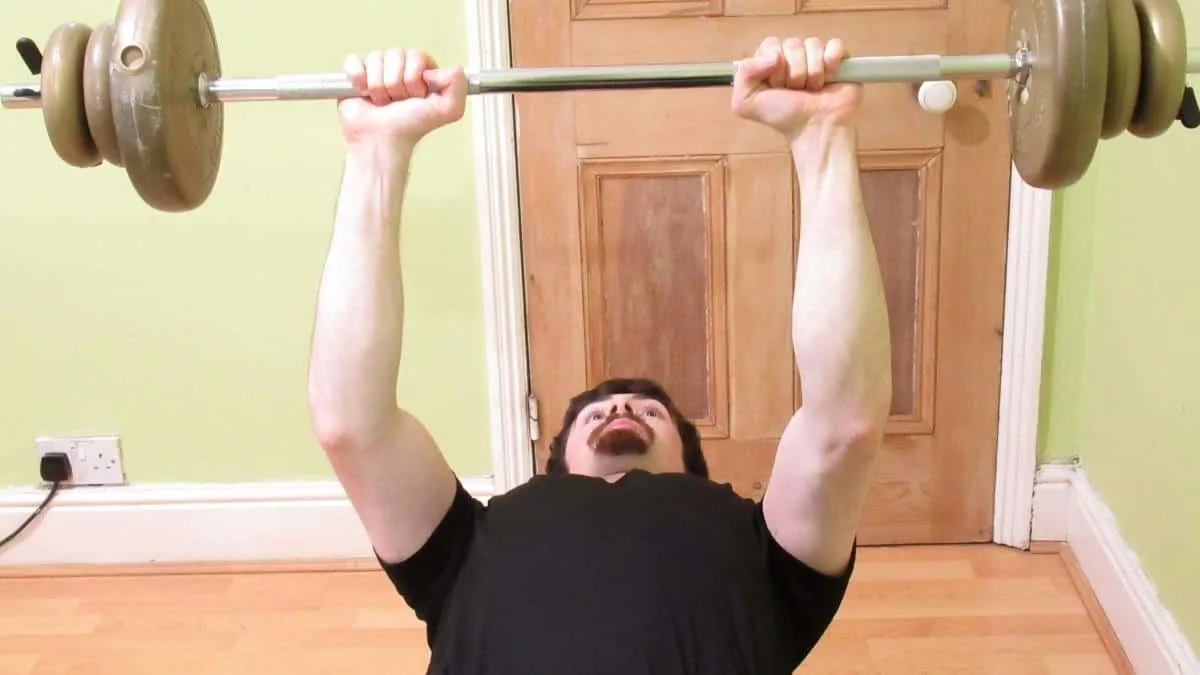I won’t waste your time. So let’s answer the question right now: Does bench press work your forearms? Yes, the bench press does work the muscles of the forearm. This is because you have to maintain a tight grip on the barbell when you’re pumping out your reps. Your forearms also help to keep your wrists straight, which is important for avoiding injuries.
Learn more about forearm involvement
Does the bench press work the forearms well?

The heavier that you lift, the more involved your forearms will become in the bench press.
This is simply because heavier weights require a tighter grip, and it’s the forearm muscles (and those of the hand) that are actually responsible for making a first, which is what allows you to grip the barbell firmly.
That said, unless you’re performing very high reps (20+), you’re unlikely to feel much of a burn in your forearms while benching. Since the chest and triceps are generally fast-twitch, most people train them with heavy weights on the bench press, so the forearms never really get time to fatigue during low rep sets.
How big can your forearms get from bench pressing?

This depends on your forearm genetics. If you have the genes to achieve top-tier forearm size, then your lower arms can get very beefy while bench pressing.
However, understand this: That size isn’t because of the bench press.
Rather, it’s because you started lifting, doing back and arm exercises (which work the forearms), and eating more protein.
In other words, the bench press isn’t responsible for any of the fantastic forearm development that you see around your gym or on stage at bodybuilding shows. [1]
Are the forearms important for the bench press?

Although you’re unlikely to get gargantuan forearms from bench pressing, [2] those lower arm muscles still play a crucial role in the lift itself. How so?
Well, let me put it to you like this. If I take someone who’s half-arsing their bench press grip and then tell them to squeeze the bar as hard as they possibly can during their next bench session, they’ll see an instant increase in strength.
Sure, it might only be by a few pounds (depending on how advanced they are). But I’ll take a few pounds in one session any day of the week.
This happens because the forearms and hands are the final points of contact between your pushing muscles and the bar. So, by squeezing the barbell tightly, you radiate tension down the kinetic chain and fire up your prime movers—chest, triceps, front delts—for a heavy set.
Related posts
Conclusion: Does bench press work the forearms well?

So, does bench press work forearms? Yes, it certainly does, but not in the way that something like a wrist curl would.
You see, the forearms only get trained isometrically during the bench press, which is sub-optimal for muscle growth. However, if you squeeze the bar tightly and then bang out sets of 20, then your forearms will almost certainly get pumped.
Despite this, the forearms and hand muscles are still vital for lifting with the correct bench press technique. These small but mighty muscles help to keep your wrists straight (which in turn helps you to generate more power and avoid wrist injuries) while also keeping all parts of the kinetic chain strong and rigid.
References
- Saeterbakken, A. H., Mo, D.-A., Scott, S., & Andersen, V. (2017). The Effects of Bench Press Variations in Competitive Athletes on Muscle Activity and Performance. Journal of Human Kinetics, 57(1), 61–71. https://doi.org/10.1515/hukin-2017-0047
- Melani, A., Gobbi, G., Galli, D., Carubbi, C., Masselli, E., Neri, L. M., Giovinco, G., Cicchella, A., Galuppo, L., Presta, V., Vaccarezza, M., Vitale, M., & Mirandola, P. (2019). Muscle Activation in Traditional and Experimental Barbell Bench Press Exercise: A Potential New Tool for Fitness Maintenance. Sports, 7(10), 224. https://doi.org/10.3390/sports7100224

